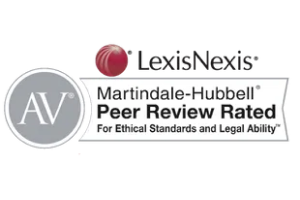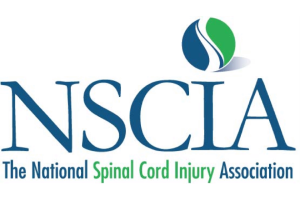Auto Defects / Automotive Product Liability
Auto Defects, Uncrashworthy Vehicles and Negligent Repair Contribute to Accidents, Severe Injury and Wrongful Death
Automotive defects and mechanical failures can cause or play a significant role in causing motor vehicle accidents. Moreover, an unsafe automotive design can render a car, truck, van or SUV “uncrashworthy” and contribute to the severity of injuries suffered by one or more of the occupants during the crash. In every case of death or serious injury, an immediate investigation should be started to determine whether a defective tire, auto part or other component caused the accident. Likewise, an assessment should be made to determine whether the severe injury or death was due to the uncrashworthy condition of the car, truck, van or SUV involved in the accident. An immediate investigation may uncover sufficient evidence to support automotive product liability claims against an automaker or parts supplier. It may also uncover evidence of improper maintenance or negligent repair which could support claims of negligence against a dealer, service provider, repair shop or owner of the vehicle.
Georgia Auto Defect Lawyers
Cases involving a serious car or SUV accident require a consideration of all possible contributors to the cause of the crash and/or the cause of the severe injuries suffered by a vehicle occupant. All too often, the focus of victims or their attorneys is limited to assessing whether there was driver negligence. Obviously, where there is driver error, claims of negligence should be pursued against that at-fault driver. However, in cases of serious injury or death, additional inquiry should be made about whether other parties were also culpable. In particular, potential claims of automotive product liability should be explored. In many of the auto accident cases they have handled, the lawyers at Ragland Law Firm, LLC have investigated whether auto defects and/or bad automotive design played a role in causing a crash or contributed to the severity of injuries suffered by an occupant. As a result of these investigations, Ragland Law Firm, LLC has been able to uncover meritorious automotive product liability claims which have been pursued against auto manufacturers. Attorneys at Ragland Law Firm, LLC know what needs to be done to investigate and determine whether there are potential auto defect claims which may be available to someone seriously injured in a motor vehicle accident.
Automotive Product Liability Lawsuits Based
Upon Allegations That a Vehicle Was “Uncrashworthy”
Most automotive product liability lawsuits involve allegations that a occupant sustained injuries (or that their injuries were more severe) because of design flaws or manufacturing defects which made the vehicle “uncrashworthy.” The concept of “crashworthiness” relates to the ability of a motor vehicle to withstand a collision and protect the occupants from serious injury during the crash sequence. A crashworthy vehicle incorporates safety features which increase its ability to prevent or reduce the severity of occupant injuries in the event of an accident. Defects which render a vehicle uncrashworthy play no role in causing the crash to occur. Instead, uncrashworthy vehicles have design flaws or defective conditions which cause or contribute to avoidable severe occupant injury during the crash. In this type of automotive product liability case, the plaintiff alleges that he would not have been injured at all or he would not have suffered a severe injury if the uncrashworthy vehicle had been designed in a safer way to better protect its occupants, or if a safety feature (such as a seatbelt or airbag) had worked properly at the time of the accident.
The Duty to Design and Produce Crashworthy Vehicles
The product liability laws in Georgia and most other states require that automakers exercise reasonable care to maximize the crashworthiness of the cars, trucks, vans and SUV’s they produce in this country. The duty to design and build crashworthy vehicles arises because it is foreseeable that any given motor vehicle will be involved in some type of accident, and that such accidents pose substantial risk of death and injury to the driver and passengers. Because the foreseeable use of a vehicle clearly includes the significant risk of an accident, the manufacturer has the legal obligation to design and make that vehicle as safe as reasonably possible for the occupants who will be exposed to the forces and circumstances known to occur during most crash sequences. Among other things, a crashworthy vehicle should be designed to absorb and dissipate the forces of impact, maintain the integrity of the occupant compartment, provide adequate occupant restraint, prevent occupant ejection, and guard against a post-collision fuel fed fire. In short, automakers have a responsibility to produce crashworthy vehicles which reduce the risk that occupants will sustain severe or fatal injuries during an automobile accident.
With the advance of technology, what constitutes a crashworthy vehicle constantly changes. For example, twenty years ago, a car was not considered uncrashworthy because of the absence of airbags. Today, airbags are a standard feature on all newer motor vehicles and any current model vehicle without airbags would likely be considered uncrashworthy. In addition to airbags, there have been many other design improvements and safety features added to enhance the crashworthiness of cars, vans, and SUV’s during the last few decades. In some vehicles, such crashworthy enhancements have included lap/shoulder seatbelts, crumple zones, more effective bumpers, side impact protection, reinforced fuel tanks, improved interior padding, use of laminated glass windows, and Electronic Stability Control (ESC). Airbags and these other safety features were developed because automakers have an ongoing duty to advance safety. This continuous duty to improve crashworthiness requires the utilization of safer designs and better occupant protection features as they become technologically and economically available. Auto manufacturers cannot lag behind the advance of technology. When they do, they are exposed to automotive product liability lawsuits claiming that they failed to exercise reasonable care in the design and production of a crashworthy car, truck, van or SUV.
Examples of Automotive Product Liability Cases Involving
Auto Defects Which Caused or Contributed to Causing the Crash
There has been much litigation involving various defective conditions which caused or contributed to causing motor vehicle accidents. Here are some of the accident causing auto defects which have most often been the subject of automotive product liability lawsuits, and which should be considered in any serious accident case:
- Defective tire / Tire tread separation / Tire blowout or other failure
- Defective brakes / Brake malfunction
- Brake-shift interlock failure / Transmission malfunction / Park-to-reverse roll away
- Failures involving defective axel, wheel or steering components
- Floor mats affecting foot pedals / Braking prevented by poor floor mat placement
- Cruise control malfunction / Sudden acceleration
- Sudden acceleration due to defective electronic throttle control system
- Rollover propensity / Inadequate stability
- Unintended or inadvertant airbag deployment
- Defective ignition module / car stalling
Examples of Automotive Product Liability Cases
Involving Auto Defects Which Rendered the Vehicle “Uncrashworthy”
Claims that a vehicle was “uncrashworthy” have dominated automotive product liability litigation over the past two decades. They arise often in cases involving inadequate passenger restraint, the ejection of a vehicle occupant, and/or the rollover of a SUV, 15-passenger van or truck. Some of the most often litigated claims of uncrashworthiness involve the following:
- Inadequate passenger restraint systems / Unsafe lap-only seatbelt design
- Airbag failure / Defective airbag sensor / Airbag deployment injury or suffocation
- Seatbelt failure / False latching / Poor anchor placement
- Child car seat failure / Defective infant safety seat / Inadequate child restraints
- Seat back collapse / Seat back failure during rear impact collision
- Structural defects / Breach of crumble zone integrity
- Occupant ejection due to door latch failure / Defective door locks
- Lift gate latch assembly failure / Occupant ejection
- Window glazing / Laminated glass versus unsafe tempered glass windows
- Roof crush during rollover / Inadequate roof pillar strength / Unsafe roof structure design
- Post-collision fuel fed fires / Dangerous gas tank locations / Fuel system defects
- Power window child injuries
- Vehicle collapse due to unsafe jack lifts
Who Can Be Held Liable for Unsafe Automotive Design or Defective Auto Parts
Depending upon the facts of each case, there are several different parties who potentially may be named as a defendant and held liable in an automotive products liability lawsuit. The primary defendant is usually the automaker which designed and manufactured the car, truck or SUV involved in the case. Manufacturers can be held liable for a negligent design which rendered the vehicle uncrashworthy, and they can be held strictly liable for any auto defect which contributed to causing the crash itself. If the auto defect involves a component part which was assembled into the vehicle by the automaker, then the part supplier which designed or manufactured that component can also be held liable under claims based upon negligence and/or strict liability. In some states, the auto dealer which sold the defective vehicle can also be held liable under the doctrine of strict liability. An auto dealer can also be held liable under a negligence theory if it was negligent in connection with any inspection, modification, assembly, maintenance or repair which it performed or failed to perform either before or after the car, truck or SUV was sold. Click and read more about product liability lawsuits in our Product Liability Practice Center.
Obtaining and Preserving the Damaged Vehicle and
Other Physical Evidence Is Critical
In the case of a serious motor vehicle accident, it is critical that someone immediately secure the damaged vehicle in which the injured occupant was traveling at the time of the accident. It is almost impossible to determine whether there is a viable automotive product liability claim if the damaged vehicle and all of its parts are not available to be inspected and analyzed by automotive engineers or accident reconstruction experts. Moreover, the damaged vehicle (and any parts or components alleged to be defective) will be vitally important evidence in any lawsuit brought against an automaker or other defendant.
Therefore, the damaged vehicle and all parts which may have come off the vehicle must be obtained and secured as soon as possible. Likewise, any other potentially relevant physical evidence should be gathered right away. The damaged vehicle (and all components thereof) must be preserved exactly in the condition they were in at the time of the accident. Therefore, the vehicle must be secured before any repairs are made. The vehicle and all other physical evidence must be stored and preserved in their accident condition, and no repairs, alterations or changes should be allowed to occur. The damaged vehicle and all other physical evidence should be photographed and/or videotaped extensively to document their condition. Likewise, detailed photographs and/or videotapes of the scene of the accident or any other vehicles involved in the accident should be taken as soon as possible.
All of this is best done by or under the supervision of an experienced auto accident lawyer. Thus, it may be advisable to retain a Georgia auto defect lawyer very soon after a serious motor vehicle accident takes place.
Contact a Georgia Automotive Product Liability Attorney
Ragland Law Firm, LLC regularly handles serious injury and wrongful death cases involving car, truck and SUV accidents. They know what needs to be done to explore whether a potential automotive product liability claim may exist. Contact us as soon as possible if you believe an auto defect or negligent automotive repair may have contributed to a motor vehicle accident involving you or a family member. We are prepared to immediately take action to investigate your case and give you legal advice about all potential claims which may be available.









